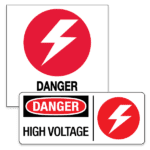
This past June, the city of Rockton, Illinois, was rocked by a massive explosion and fire. A chemical plant that employed more than 300 workers was fully engulfed by fire, which then caused an explosion sending a massive plume of toxic smoke into the air. Residents up to 2 km around the plant were forced to evacuate, and the toxic smoke also threatened the freshwater source for the community. The plant was the largest producer of industrial grease and also housed a large amount of chemicals used in its production, including sulfuric acid.
The cause of the massive chemical plant explosion and fire was determined to be an accident, but was it preventable?
Investigators determined that the contract workers conducting insulation replacement inside the plant accidentally punctured an elevated transfer pipe with a scissor lift. The puncture caused the release of mineral oil, which was ignited by an unknown source, causing the plant fire.
Employees of the plant reacted swiftly to the incident by terminating processes such as turning off a nearby boiler, but it still did not stop the catastrophic incident. Although the fire was unable to be stopped, all 70 employees were able to escape without any injuries.
Should all processes have been terminated during the work of the contractors?
Maybe, especially while working near piping used in ongoing processes. But, this raises many other questions:
- Were the contractors given safety awareness training of the dangers of the worksite?
- Should there have been supervision of the contractors during the work?
- Was there an evaluation of the possible implications that could have occurred? If so, could they have temporarily suspended processes in that area?
This situation reminds me of a paper mill from my hometown in New Brunswick when they had 24-hour shutdowns. Once the mill was shut down, outside contractors would come in to do major work while still having a paper mill representative on-site to manage them.
As a former military firefighter, I would like to share some procedures that I believe should be instilled in these types of workplaces. The plant in Rockton may have followed similar procedures, which could have been the reason all 70 employees were able to escape without injury.
- If outsiders (e.g., contractors) are working in your workplace, ensure they are made aware of workplace hazards;
- Have a chaperone/supervisor from the plant;
- Advise all employees that outsiders will be in the building. This can be helpful for more vigilance, but also employees can provide insight on other hazards / potential problems;
- Have additional resources on site.
Example: If any welding occurs on a military base, applying for a hot works permit from the base fire department is a must. The firefighters would add it to their shift change debriefing and would do a pre- and post-inspection to look for possible hot spots. If the work is done in a sensitive area, it is required that a sentry is posted in the area overnight to ensure no fires are smoldering in a hidden place; - If the work is occurring in a hazardous environment, ask local fire departments (and tactical teams) to be on-site or on standby.
It is still unknown if there is anything more the plant could have done to prevent this incident, but it is vital to continually verify safety procedures to ensure if anything has changed or anything else you can ameliorate and ask one simple question “what if?”
Stay up to date and sign up for our newsletter!
We have all the products, services and training you need to ensure your staff is properly trained and informed.
 Training Courses |
 Regulatory Publications |
 Custom or Stock Signs |






 ICC USA
ICC USA ICC Canada
ICC Canada